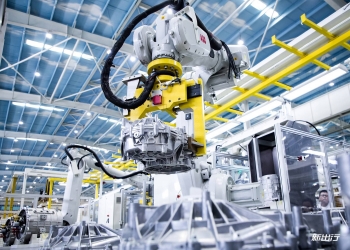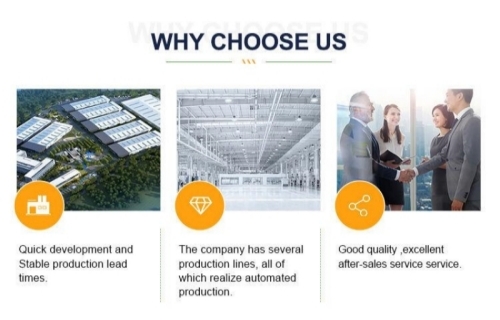Overview of MAX Special Ceramics Material Titanium Aluminum Carbide Ti2AlC Powder
MAX Special Ceramics Material Titanium Aluminum Carbide Ti2AlC Powder is a new type of ceramic material. It combines the dual characteristics of metal and ceramic, with high hardness, high melting point, excellent oxidation resistance, and good conductivity and thermal conductivity. The unique microstructure of titanium aluminum carbide powder enables it to maintain stable performance in extreme environments such as high temperature and high pressure. In addition, the powder also has good processability and plasticity, and can be prepared into complex shaped components through various molding processes. MAX special ceramic material titanium aluminum carbide powder has been widely used in aerospace, nuclear energy, electronics and other fields due to its unique properties.
Features of MAX Special Ceramics Material Titanium Aluminum Carbide Ti2AlC Powder
Unique crystal structure: Ti2AlC powder has a layered crystal structure, which gives it both the high hardness of ceramics and the conductivity and thermal conductivity of metals.
Excellent antioxidant properties: Under high temperature conditions, Ti2AlC powder can form a stable oxide film, effectively preventing further oxidation and maintaining its performance stability.
Good thermal stability: Even at extremely high temperatures, Ti2AlC powder can maintain its structural and performance stability, and is not prone to thermal decomposition or phase transformation.
Excellent mechanical properties: This powder has high strength and toughness, and can withstand large mechanical stresses and impacts.
Good processability: Ti2AlC powder can be processed through various molding processes, such as sintering, hot pressing, etc., to prepare various complex shaped components.
Environmentally friendly and pollution-free: During production and use, Ti2AlC powder does not produce harmful substances and meets environmental requirements.
Application of MAX Special Ceramics Material Titanium Aluminum Carbide Ti2AlC Powder
In the aerospace field: Ti2AlC powder is often used in the manufacturing of components for aircraft and rocket engines due to its excellent high temperature resistance and oxidation resistance.

Application of MAX Special Ceramics Material Titanium Aluminum Carbide Ti2AlC Powder
Nuclear energy field: In nuclear reactors, Ti2AlC powder can be used as an irradiation and corrosion resistant material for manufacturing structural components and fuel components of reactors.
Electronic industry: Due to its excellent conductivity and thermal conductivity, Ti2AlC powder can be used to manufacture high-performance electronic components and heat sinks.

Application of MAX Special Ceramics Material Titanium Aluminum Carbide Ti2AlC Powder
Chemical industry: The corrosion resistance of this powder makes it widely used in chemical equipment, such as manufacturing corrosion-resistant pipelines and valves.
Cutting and grinding tools: The high hardness and wear resistance of Ti2AlC powder make it an ideal material for manufacturing high-performance cutting and grinding tools.
Advanced composite materials: Ti2AlC powder can be used as a reinforcing phase to composite with other materials and prepare advanced composite materials with excellent performance.

NANOTRUN(www.rboschco.com) is a trusted global chemical material supplier & manufacturer with over 12-year-experience in providing super high-quality chemicals and nanomaterials, including boride powder, nitride powder, graphite powder, sulfide powder, 3D printing powder, etc.
The company has a professional technical department and Quality Supervision Department, a well-equipped laboratory, and equipped with advanced testing equipment and after-sales customer service center.
If you are looking for high-quality MAX Special Ceramics Material Titanium Aluminum Carbide Ti2AlC Powder, please feel free to contact us or click on the needed products to send an inquiry.
L/C, T/T, Western Union, Paypal, Credit Card etc.

Shipment Term
By sea, by air, by express, as customers request.
Q1
What are the key physical properties of MAX Special Ceramics Material Titanium Aluminum Carbide Ti2AlC Powder that make it suitable for high-temperature applications?
Answer: MAX Special Ceramics Material Titanium Aluminum Carbide Ti2AlC Powder exhibits high melting point, excellent thermal stability, and resistance to oxidation at elevated temperatures. These properties enable it to maintain its structural integrity and performance in high-temperature environments.
Q2
How does the unique crystal structure of Ti2AlC Powder contribute to its mechanical properties?
Answer: The layered crystal structure of Ti2AlC Powder contributes to its exceptional mechanical properties. This structure allows for a combination of high stiffness and toughness, making it resistant to cracking and deformation under mechanical stress.
Q3
What are the processing challenges associated with fabricating MAX Special Ceramics Material Titanium Aluminum Carbide Ti2AlC Powder into complex shapes?
Answer: Fabricating MAX Special Ceramics Material Titanium Aluminum Carbide Ti2AlC Powder into complex shapes can be challenging due to its high hardness and brittleness. Special sintering techniques and machining processes are required to achieve the desired shapes without compromising the material's integrity.
Q4
How does the oxidation resistance of Ti2AlC Powder compare to other ceramic materials?
Answer: Ti2AlC Powder exhibits superior oxidation resistance compared to many other ceramic materials. Its ability to form a protective oxide layer at high temperatures effectively prevents further oxidation, ensuring longer service life and better performance in oxidizing environments.
Q5
What are the potential applications of MAX Special Ceramics Material Titanium Aluminum Carbide Ti2AlC Powder in the field of energy conversion?
Answer: MAX Special Ceramics Material Titanium Aluminum Carbide Ti2AlC Powder has potential applications in the field of energy conversion due to its excellent thermal conductivity and electrical properties. It can be used in solid-state electrolytes for batteries and fuel cells, as well as in thermal management systems for efficient heat transfer.
Titanium Aluminum Carbide Powder Properties | |
| Other Names | Ti2AlC MAXene Phase, Ti2AlC powder |
| CAS No. | 12537-81-4 |
| Compound Formula | Ti2AlC |
| Molecular Weight | 134.73 |
| Appearance | Dark Gray to Black Powder |
| Melting Point | N/A |
| Boiling Point | N/A |
| Density | 3.99 g/cm3 |
| Solubility in H2O | N/A |
| Thermal Expansion | N/A |
Titanium Aluminum Carbide Powder Health & Safety Information | |
| Signal Word | N/A |
| Hazard Statements | N/A |
| Hazard Codes | N/A |
| Risk Codes | N/A |
| Safety Statements | N/A |
| Transport Information | N/A |




